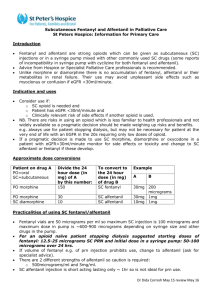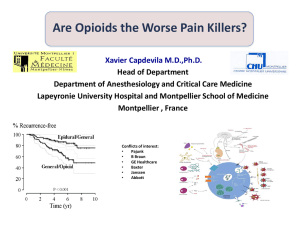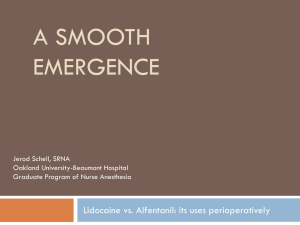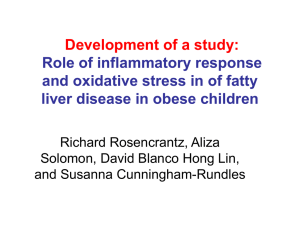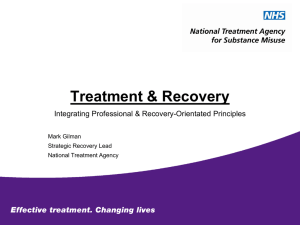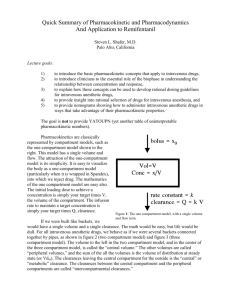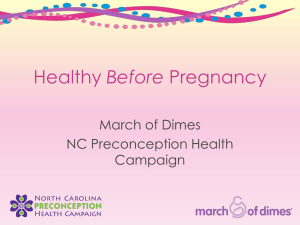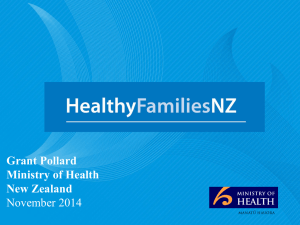Post-anesthesia Recovery after infusion of Propofol with
advertisement
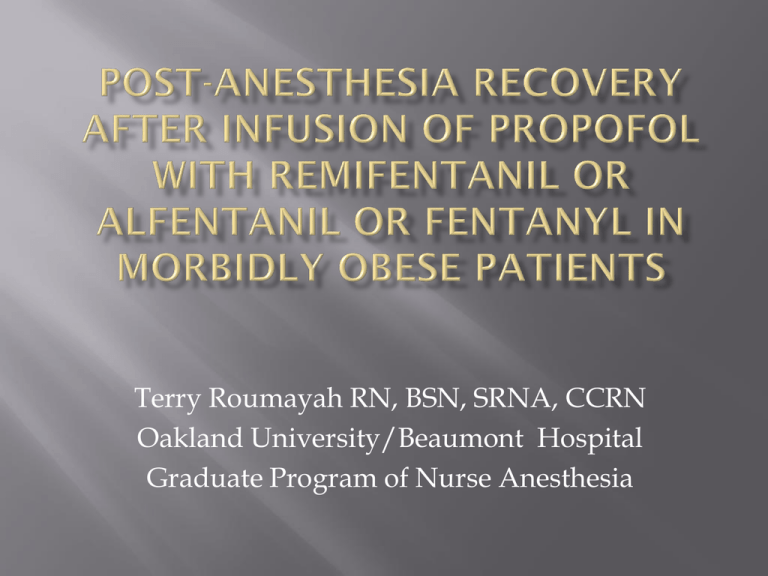
Terry Roumayah RN, BSN, SRNA, CCRN Oakland University/Beaumont Hospital Graduate Program of Nurse Anesthesia Gaszynski, T., Gaszynski W., Strzelczyk. (2004). Post-anesthesia recovery after infusion of propofol with remifentanil or alfentanil or fentanyl in morbidly obese patients. Obesity Surgery, 14, 498-504 Location: Barlicki University Hospital, Lodz, Poland. Approval obtained from the local University Ethics Committee. (Allegedly!) ----> The type of opioid used during general anesthesia in the morbidly obese influences recovery and the postoperative period. The use of modern anesthetics and methods of anesthesia has increased safety of general anesthesia in high-risk patients, i.e. the morbidly obese. The postoperative recovery period becomes a major concern because of the safety and costs of possible complications. It has been suggested that the intraoperative use of opioids during general anesthesia may determine the development of post-anesthetic complications among morbidly obese patients. Fentanyl, Alfentanil and Remifentanil will be compared in terms of post op recovery in the morbidly obese. Not many studies have been done comparing these drugs in relation to morbidly obese post op recovery. Fentanyl • • • • Potency – 100 X Morphine Onset 1-2 min, Peak 3-5 min, Duration 0.5-1 hours Metabolized in liver and excreted in urine Elimination half-life 3.1-6.6 hours Alfentanil • • • • Potency – 10-20 X Morphine Onset 60-90 sec, Peak 2-3 min, Duration 15-30 min Metabolized in liver and excreted in urine Elimination half-life 1.4-1.5 hours Remifentanil • Potency – 100 X Morphine • Ultra rapid and short acting • Metabolized by nonspecific esterases Randomized control study The study was double blind for the patient and PACU staff. Anesthesiologist preforming general anesthesia was aware of the opioid used. Inclusion Criteria • • • BMI range of 36-49 Elective Roux-en-Y gastric bypass ASA class 2 or 3 Morbidly obese subjects with BMI >50 or with co-morbidities influencing the respiratory drive (sleep apnea syndrome, Pickwickian syndrome) were excluded from the study. 3 patients in the Alfentanil group were excluded because of incompletely collected data. 60 morbidly obese patients were randomly allocated into 3 groups. Remifentanil (R) - 20 patients Fentanyl (F) – 22 patients Alfentanil (A) – 18 patients The three opioids were administered intravenously per kg of Ideal Body Weight (IBW). Male = 50 + (height - 150) X 0.7 Female = 50 + (height - 150) X 0.6 Rates of infusion was changed based on cardiovascular parameters. Fentanyl 5 mcg/kg then 0.05 mcg/kg/min Remifentanil 1.0 mcg/kg/min Alfentanil 1.5 mcg/kg/min All other anesthetics were given in all 3 groups following the same pattern (propofol gtt, 50% Nitrous Oxide in oxygen, Cisatracurium for muscle relaxant). Monitors used were NIBP, pulse ox, ETc02, Propofol titrated to BIS level between 40 and 60. Morphine was given in the Remifentanil group. Fentanyl infusion was stopped 20 minutes before the end of the operation. Alfentanil was stopped 10 minutes before the end of the operation. Zofran was given. Neostigmine and Atropine were used for reversal. Textbook extubation criteria used. Post op analgesia using morphine 2mg/hour. Post op period up to 6 hours was evaluated. Incidence of post op N/V was recorded. Verbal scale for post op pain (1 – Small, 2 mild, 3 - disturbing, 4 – strong, 5 – severe). What Was Measured • • • • • • • • Response to verbal commands Spontaneous respirations Adequate respiration Safe extubation Pain (no pain, small, mild, disturbing, strong, severe) No nausea or vomiting Nausea Vomiting Analysis included the Shapiro-Wilk test, Student t-test, Cochrane-Cox test and the Wilcoxon test (AKA the Brandon Wilcox test). To confirm the differences between the groups, ANOVA test was preformed. The results of statistical analysis were presented as mean values with two-sided P values. P <0.05 were considered significant . Group R had the best “recovery profile”(duration to achieve required stages of post-anesthesia recovery and discontinuation of Propofol) and Group A and F were similar. Duration to spontaneous respiration, adequate respiration and safe extubation were significantly shorter in group R compared with group F. Evaluation of early postoperative pain and requirement for analgesics revealed that right after anesthesia, more patients in group R felt disturbing pain (25%) than group F (4.5%). The number of patients who felt mild pain was similar in all groups (range 45-46.7 %). None of the groups felt strong or severe pain. Post op N/V occurred more often in group R (30% compared to 20% in group A and 14% in group f). Cardiovascular parameters (heart rate and BP) during the post-anesthesia period remained within acceptable limits and did not differ from levels before operation. Blood oxygenation > 94%, p02 > 60mmHg, and pC02 stayed between 35 and 45 mmHg No respiratory complications were observed in the postoperative period. Obese patients are sensitive to all central depressant drugs, with upper airway obstruction or respiratory arrest occurring with minimal doses of opioids. Remifentanil dosage is more flexible than fentanyl and Alfentanil and can be based on changes in cardiovascular parameters. This allows for immediate reaction and increase in doses that does not lead to accumulation and prolonged action which is accompanied by residual respiratory depression. This makes Remifentanil the choice opioid for patients at high risk for respiratory complications. Fentanyl effects lasts longer and influence post operative pain control positively. Alfentanil is similar to Fentanyl in terms of PONV and post op pain. The higher rate of PONV is probably related to the higher doses of post op Morphine. Strengths • • • The studied groups were similar in demographic profiles and duration of the procedure. Randomized double blind study The anesthetics given in all three groups followed the same pattern. Small sample size of only 60 patients. Doses of Morphine could have influenced results especially in the Remifentanil group. More research needs to be completed related to higher ASA classes with comorbidities influencing the respiratory drive. Morbidly obese patients with BMI <50 and without co-morbidities influencing respiratory drive can be safely anesthetized with Alfentanil or Fentanyl. The advantage of Remifentanil, which is the better recovery profile, is altered by the higher rate of PONV and more difficult post op pain management.
